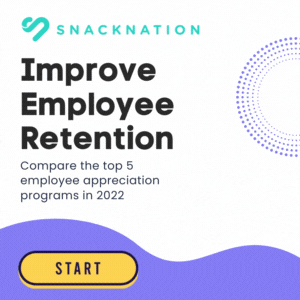Once upon a time, in offices everywhere, we all packed into tiny elevators without blinking an eye. We palmed door handles, still warm from another’s touch. We put our hands all over microwaves and refrigerators covered in visible fingerprints.
The COVID-19 pandemic brought an end to our old office lives and ushered in a new age of public-health awareness, sanitation savviness, and social distancing at work.
Social distancing at work might be the most novel aspect of our new normal. When have you ever worried about bumping into someone while preparing snacks in the office kitchen?
Let’s go ahead and tackle the question we’re all asking: What is social distancing at work?
Social distancing at work is the practice of staying at least 6 feet apart from our co-workers, co-commuters, and office and building mates at all times. The core rule at the heart of social distancing—staying 6 feet apart—necessitates additional interventions, such as reducing office capacity and limiting the number of people allowed at in-person meetings.
Social distancing at work allows us to continue efforts to limit the spread of COVID-19 while also safely resuming new-normal business practices. As offices and businesses reopen, social distancing measures may help avoid COVID-19 surges.
Social distancing at work also demands building managers, bosses, office managers—and really anyone who works in an office—to start thinking like public-health professionals, constantly striving to identify and mitigate risks.
We developed the consideration points below to help you start envisioning your safe return-to-work strategy.
We encourage you to discuss these points with as many people (inside and outside your company) as possible and to frequently check national, state, and local government websites for up-to-date guidance as the COVID-19 pandemic develops.
View Our Social Distancing at Work Checklist
Have You Heard Of The Employee Retention Credit?
See If You QualifyPage Contents (Click To Jump)
1) Cleaning And Disinfecting Protocols At Work
What:
→ The precise standards and procedures anyone cleaning your office (or occupying your office) should understand and follow.
Why:
→ The Centers for Disease Control and Prevention (CDC) have the “why” covered. Just read these lines from their guidance on cleaning and disinfection:
“Current evidence suggests that SARS-CoV-2 may remain viable for hours to days on surfaces made from a variety of materials. Cleaning of visibly dirty surfaces followed by disinfection is a best practice measure for prevention of COVID-19 and other viral respiratory illnesses in households and community settings.”
When:
→ Ongoing.
- Establish your protocol well before any return-to-work plans go into effect.
- Thoroughly clean the empty office before anyone returns.
- Continue diligent cleaning and sanitizing indefinitely.
How:
→ Consider these points to start establishing your cleaning and disinfecting protocols. Work closely with your office cleaning staff as you plan. If your office sits within a larger building, then you’ll also have to collaborate with building managers and additional cleaners.
- Have your primary cleaning professionals updated protocols to address challenges related to COVID-19 containment? (View the CDC’s guidance on Cleaning and Disinfecting Your Facility and the World Health Organization’s advice for office cleaning.)
- Will you need to increase your cleaning frequency demands? (Daily cleaning goals might need to be adjusted if you have many workers rotating in and out of the office.
- Will you need to adjust contracts to reflect additional hours and resources dedicated to more intense, frequent cleaning?
Do you work in a building with common areas your cleaners don’t cover? These areas might include:
- Elevators
- External hallways
- Lobbies
- Parking garages
Do you have a system in place for tracking areas that have been cleaned and when? (Think of those checklists you see on the doors of public restrooms.)
Are contractors available should you need an emergency cleaning session if someone in your office tests positive?
What cleaning products does your staff use?
- Are these products on the Environmental Protection Agency’s list of COVID-19 disinfectants?
Do your cleaners have a list of critical office areas or items to cover each day? Think of any surface people touch often, including:
- Phone consoles
- Kitchen appliances, including microwaves
- Door handles
- Sinks
- Common tables
Should you consider hiring a third-party sanitation inspector?
What cleaning protocols will you ask staff to follow?
Examples include:
- Sanitizing desks
- Sanitizing equipment
- Wiping door handles
- Washing hands properly and frequently
What cleaning and sanitation products can you supply employees? What will you expect them to bring?
- One office manager in this Facebook Group is providing gloves, tissues, wipes, and cleaning spray.
Potential pitfalls:
- Lax cleaning procedures.
- Solution: Tracking and accountability protocols
- Unsanitary areas outside your office.
- Solution: Frequent communication and collaboration with all building managers.
Pro-tips to help with cleaning and disinfecting protocols:
Members of our Facebook Group for Office Managers have recommended:
- Electrostatic cleaning services, such as those offered by Onedesk Commercial Cleaning
- Placing orders for cleaning supplies as soon as possible. Delay office openings until you can receive any back-ordered items.
2) Crowd Control Planning At Work
What:
→ Your plan for keeping crowds in your office low enough to decrease the risk of spreading infection.
Why:
→ Without crowd control planning, most office environments make it impossible for people to stay 6 feet apart at all times. For example, if even one hallway is less than 6 feet wide, then it could lead to disease transmission.
This post features a model showing how quickly disease spreads in a standard office environment with no crowd control.
When:
→ Ongoing.
- Establish your plan before anyone returns.
- Continue enforcing your plan indefinitely.
How:
→ Consider these points to start crowd control planning.
How many employees will be allowed in the office at any given time?
Dr. Shrikant Sharma reports his analytic team’s finding:
“The results show that beyond 40% a occupancy rate revisions to desk layout and high footfall areas will be needed to enable effective social distancing in the workplace.”
How will you determine who’s allowed in the office?
- Manager input: Who on their teams needs to be in the office?
- Employee input: Who wants to (or feels they need to) return to the office?
- Health conditions: Do any health conditions remove certain employees from the consideration pool?
How many people will be allowed to meet / gather in common areas?
- Will the 10-people-or-less rule of thumb suffice given the size of your common rooms?
Other considerations for meetings:
- The Society for Human Resource Management recommends encouraging virtual meetings, even if all participants make it to the office.
- If in-person meetings are a must…
- Measure the room.
- How many people can fit in the room and still be 6 feet apart?
- Use this number as your meeting participant limit.
- Mark chairs (with signs, tape, etc.) where employees can safely sit.
- Remove extra chairs from the meeting room to discourage gathering outside the rules.
How will you monitor or enforce these rules?
Will you appoint an on-site monitor or allow employees to self-report compliance?
Potential pitfalls:
- Despite rules, people don’t stay 6 feet away from one another.
- Solution: Reduce the quantity of people allowed in the office at any given time.
- People ignoring rules and regulations.
- Solution: Increase communication or begin sending people home.
Additional resources to help with crowd control planning:
- 52 Virtual Team Building Activities To Boost Remote Employee Morale
- The Complete 8-Step Guide To Conducting An Effective Virtual Meeting [With Checklist]
3) Personal Protective Equipment (PPE) Policies At Work
What:
→ A clear, well-communicated PPE policy that gets ahead of employee questions and ensures consistent practices throughout your company.
Why:
→ PPE works in conjunction with social distancing to block exposure to infectious material. The CDC recommends wearing PPE whenever there’s a chance of contacting potentially infectious sprays or spatters, which can be created by coughs or sneezes.
When:
→ Develop your plan and distribute PPE (or communicate what you expect employees to provide) before returning to work.
How:
→ Consider these points to start developing a PPE policy.
Complete a PPE risk assessment for your office.
- Consider paring down an existing template, from industries where employees come in contact with chemicals or hazardous materials, to suit your needs.
- Designing an Effective PPE Program from the Canadian Center for Occupational Health and Safety.
- Personal Protective Equipment Hazard Assessment from Oregon OSHA.
How closely packed are employees throughout the day?
Pandemic times have heightened the risk status of simple coughs and sneezes.
- Coughing: Can spread 3,000 droplets at a rate of 50 miles per hour.
- Sneezing: Can spread 100,000 droplets at a rate of 100 miles per hour.
Consider the level of human contact necessary to conduct business.
- Are workers required to touch or exchange goods frequently?
- Are workers required to contact clients or customers to deliver goods and services?
Use your office’s contact level to determine what kind of PPE might be appropriate for your office.
Options:
- Masks
- Gloves
- Eye protection
- Shoe covers
- Protective clothing
Will you ask employees to wear PPE during their commutes?
Will you provide the PPE or ask employees to secure it themselves?
If employees must provide their own PPE, will you mandate the type you require?
Potential pitfalls:
- Improper use or wearing of PPE.
- Solution: Adequate communication and monitoring of PPE use.
- Lack of PPE supplies.
- Solution: Place orders as soon as possible and don’t bring people back into the office until you have supplies on hand.
Pro-tips to help with personal protective equipment (PPE) policy development:
One office manager in this Facebook Group explains how her company is managing PPE,
“We purchased 400+ masks, 6ft distance between all employees, masks must be worn in common areas, infrared temperature scan upon entering the building.”
4) Workspace Modifications For The Office
What:
→ A strategy for reorganizing and altering your workspace to decrease the risk of spreading infection.
Why:
→ Many office designs maximize capacity, cleverly and comfortably fitting as many people into a space as possible. The same human density that makes modern office floor plans cost-effective also makes them breeding grounds for disease.
However, workspace modifications, implemented in conjunction with other prevention protocols, could make existing offices safe again.
Airborne disease expert, Dr. Donald Milton, told National Geographic:
“You could space people out, and if you’re doing that in combination with a reasonable amount of ventilation and sanitation, you should be able to have a reasonably safe space.”
When:
→ Plan to modify your office before returning to work. (Empty offices make completing modifications easier, and planning early gives you time to secure funds or communicate challenges with staff if the necessary modifications are outside your budget.)
How:
→ Consider these points to start developing a workspace modification plan.
Model employee movement and clusters within the office.
- Secure office diagrams.
- Use space planning software, such as SpaceIQ or smartdraw.
- Where do people come in closest contact on a typical day?
How can you reimagine the flow of human traffic in your office?
Goal: Remove as much human error from the challenge of social distancing as possible.
Inspiration: Vehicle traffic control.
- Road markings, signs, and stop-and-go lights keep cars from colliding on the street.
- Steal some of these techniques to keep people apart in the office.
- Examples:
- Get stop and go signs people can flip when they enter small spaces, such as closets, storerooms, or break rooms.
- Mark narrow hallways with one-way lanes to stop people from getting too close.
- Rope off sections of kitchens and gathering rooms to stop people from crowding.
What additional upgrades can you make to limit surface contact?
- Examples: Add more automatic features to your office. Think: doors, trash cans, sinks, and sanitizer receptacles.
Who will make these modifications?
- Establish a timeline that allows any contractors to make the modifications while also practicing appropriate distancing and safety measures.
How flexible are your modifications?
- If the day comes when you can increase capacity, will it be easy to add workstations?
What needs to be cleaned, replaced, or disposed of?
- Examples: Air filters, old carpets, and kitchen sponges.
- Before you modify, have employees sign up for time slots when they can come and collect personal belongings.
How will you evaluate the success of your office modifications?
- Examples: Video tracking, on-site monitoring, and employee feedback.
Potential pitfalls:
- Inadequate budget.
- Solution: Plan a realistic phased approach and rely on other countermeasures, such as remote working, to control the spread of disease.
- Unpredictable human movements.
- Solution: Pair any physical interventions with communications that explain the need to remain 6 feet apart. Count on your employees to enforce rules.
Resources to help with workspace modification:
5) Education, Communication, And Enforcement At Work
What:
→ The collection of tools and strategies for telling employees what’s going on and asking how they feel about it.
Why:
→ Even the best-planned policies accomplish nothing if no one adopts them.
When:
→ Ongoing.
- Communicate before return-to-work plans go into effect.
- Communicate as people return to work.
- Communicate as policies change.
How:
→ Consider these points to develop a return-to-work communication plan.
Ask employees how they feel about the situation.
Create and distribute a survey.
Ask managers to talk to direct reports.
Example questions:
- Do you feel comfortable returning to work?
- What concerns do you have?
- What resources or services would you require to return to work?
- Some employees may be willing to return to work but find it challenging if schools or daycare centers are closed.
What types of communication will be necessary to ensure everyone understands your new policies?
- Do your plans depend heavily on employee adoption? If so, then you might need to do full-scale training instead of standard communication.
- At the very least, your communication strategy should:
1) Ensure employees understand new policies and procedures
2) Give employees a chance to ask clarifying questions about new policies and procedures
Consider non-policy updates your employees need to hear. Some of these communications may be challenging, but transparency is the only way to ensure employees can plan ahead if changes impact their lives.
- Will you have to suspend raises due to pandemic-related financial concerns?
- Are you looking at other cost-saving measures that might impact employees?
- What strategic operations or business shifts has the pandemic inspired?
How will you balance “hard” communication with “soft” communication?
- Make sure some communications focus on relationships instead of just the delivery of rules and regulations.
Work on cultivating new mindsets.
- Ask employees and managers to rethink their ideas of work and success.
- Author David Finkel recommends adjusting key performance indicators to fit current situations and adjust goals that are no longer important.
Potential pitfalls:
- Confusion and misunderstanding.
- Solutions: A two-way mechanism that lets employees ask clarifying questions. Open webinars or town halls with long question and answer portions.
Resources to help with education, communication, and enforcement:
- Members of our Facebook Group for Office Managers have recommended the free back-to-work pulse resources from Qualtrics.
6) Staggered Attendance For Work
What:
→ Staggered attendance allows more people to work in the office if they do so at different times. Restaurants and amusement parks have long used staggering strategies to entertain and feed large crowds of people while keeping capacity within regulations at any given time.
Why:
→ If your office capacity is lower than the desire or need to be in the office, then staggering attendance helps everyone get at least a little office time.
When:
→ Develop a staggered attendance policy after you establish your office’s capacity limit and figure out how many people need or want to be in the office.
How:
→ Consider these points to develop a staggered attendance policy.
Consider different options for staggered attendance and flexible schedules:
- Reservable desks and workspaces. Offer a safe number of spaces on a first-come-first-served basis.
- Workspace lottery. An alternative to the first-come-first-served model, an office lottery randomly distributes workspaces among a pool of employees.
- Shift-based schedules. Allows multiple shifts to come in at different hourly blocks each day. Each shift should include no more people than your safe office capacity. Allow ample cushion between shifts for proper exits and thorough cleaning.
- Day-by-day blocks. Allow different blocks of workers to come in on different days of the week.
How often will you refresh space distribution to cater to different pools of employees?
- For example, if you have more people than space, then you might need to reassign workspaces every week instead of every month.
Potential pitfalls:
- Lack of safe office space for everyone who wants to come to work.
- Solution: Transparency. Explain why crowd-control measures are necessary and ask employees to be patient.
- Logistical confusion.
- Solution: Map out exactly how any of your staggering programs will work and run a test study before you implement.
Pro-tips to help with staggered attendance:
Members of our Facebook Group for Office Managers have recommended:
- Creating a task force to help with staggered attendance planning.
- Using existing calendars to reserve and track desk use.
7) Integration And Employee Support At Work
What:
→ Making sure employees have the support they need to work while keeping themselves and others safe.
Why:
→ Challenging times call for above-average support.
When:
→ Ongoing.
- Before return-to-work plans go into effect.
- As people return to work.
- As policies change.
How:
→ Consider these points to develop an integration and employee support policy.
Update all existing office policies to accommodate new safety measures.
Work with your human resources (or other relevant) team to completely append any office handbooks or policy documentation you have.
Example:
- Update work break policies.
- Will employees be allowed to leave the office throughout the day?
- If employees enter crowded restaurants or stores during breaks, what is the re-entry policy?
- If employees can’t take breaks, will the work days be shorter to accommodate?
- Update rules on work social gatherings.
- Set capacity limits or encourage alternative forms of team building.
- Update company travel policies to limit non-essential travel.
- Update continued learning (workshop, conferences, and classes) policies to favor digital or remote learning opportunities.
What support do employees need outside the office?
- Mental health services.
- Childcare services.
- Financial planning, especially if your company had to implement temporary furloughs or hour reductions.
Potential pitfalls:
- Unforeseen needs and challenges.
- Solution: A flexible mindset. No one knows exactly what to expect as we return to work. Unfortunately, we can only plan to meet unplanned challenges.
Pro-tips to help with integration and employee support:
One office manager in this Facebook Group had this advice:
“I suggest you brainstorm to set out a mind map or task list or similar to address the thoughts that you think are applicable to your organisation vs state/govt guidance. [. . .] Just ask yourself what questions you have and what answers you would like to hear applicable to keeping yourself safe in your environment (and getting to your place of work). You can’t address everything but you can try to do the absolute best you can within reason/cost. Write it all down then control what you can. Your questions are pretty much the same as everyone else’s I’m sure. [. . .]”
8) Entrance And Screening Protocols At Work
What:
→ Protocols to stop employees from bringing infection risks with them as they enter your sanitized and modified office space.
Why:
→ Just one employee can infect multiple people.
When:
→ Ongoing.
- Establish your plan before anyone returns.
- Continue enforcing your plan indefinitely.
How:
→ Consider these points to establish your entrance and screening protocols. If your office is part of a larger building, then you’ll also have to collaborate with building managers, security guards, or any other groups who “own” or monitor points of entry.
Make a list of every known point of entry to your office.
- Document a screening policy for every point of entry under your control.
- Collaborate with other stakeholders to establish policies for every shared point of entry.
- New office security might resemble something like airport security where certain screening measures occur as people enter the shared space (TSA security checkpoints) and additional security measures (boarding pass scans) occur as people board individual aircrafts.
Map how people flow from various points of entry to your specific office.
- How will you control crowds in those places?
- Think: Elevators, lobbies, corridors.
Establish your symptom screening protocols.
Some options include:
- Self-reported symptom tracking surveys.
- Temperature screenings. Note: Should they be administered or self-reported by employees?
- Questionnaires. Ex: Have you traveled recently? Have you been to a gathering of 10+ people recently?
- Antibody testing.
What other factors will you check or require before entry?
Examples:
- Check PPE.
- Sanitize hands.
- Sanitize equipment with the person. (Electronics, office supplies, etc.)
Establish screening-based decisions.
- What specific results are considered safe or unsafe?
- If someone is tagged “unsafe,” when will you allow them to return?
Establish ongoing interventions in the case of a breach—if someone allowed in the office starts displaying symptoms or reports a positive test:
Examples:
- Move symptomatic individuals to an empty “quarantine” room.
- Send symptomatic individual home.
- Send all employees home.
- Implement office contact tracing to notify employees of potential exposure.
- Perform emergency cleaning and disinfecting.
Designate an office public health liaison to monitor the situation outside your office.
- If cases in your area spike, will you call for a full return to remote work?
Potential pitfalls:
- Perceived safety bias.
- Solution: Communicate that entry screening is one of many interventions necessary to control the spread of disease and does not guarantee a sterile environment.
- Challenges with self-reporting/self-screening.
- Solution: Balance self-reporting techniques with administered techniques to maximize safety.
Pro-tip to help with entrance and screening protocols:
Members of our Facebook Group for Office Managers have recommended:
- Being prepared for personal preferences when it comes to screening protocol.
- One member explained that someone trying to enter the office worried that a touchless gun thermometer might ruin her chakras.
- Their office accommodated, allowing this person to bring in their own thermometer.
9) Optional Work-From-Home Policy
What:
→ Allowing employees to continue working according to your previously-established or pandemic-prompted work from home policy.
Why:
→ Return-to-work plans include several moving parts and tons of uncertainty. Continuing an effective remote work model may be the safest option if the nature of work allows it.
When:
→ Before you consider how to plan a return-to-work policy and as you develop your policy. Weigh pros and cons of effectively managing remote work vs. taking the risks and managing the array of logistics involved in returning to work.
How:
→ Consider these points to redlight or greenlight a default work-from-home policy.
- Evaluate performance and productivity since any pandemic-related remote policies went into effect.
- Vote to see how many people in your office want to continue working from home and how many would prefer working in the office.
- Go through all the positions at your company.
- Make a list of responsibilities or duties made impossible or more challenging as a result of work-from-home policies.
- Consider how to adapt impossible or challenging responsibilities to accommodate work-from-home structures.
- Get employee input and commit to constantly improving work-from-home processes.
Potential pitfalls:
- Employees don’t want to work from home.
- Solution: Conduct deep-dives to determine their reservations and see if you can work around them. For example, some employees might simply want to have in-person meetings once a week if possible.
Resources to help with work-from-home strategies:
- How To Create The Perfect Work From Home Policy For Your Company [With Template]
- The Definitive Project Manager’s Guide to Running a Remote Team
10) Safe Commuting (Public Transport) To Work
What:
→ Guidance to help employees travel to work while reducing their risk of disease and their potential to pass disease to co-workers.
Why:
→ Packed public transportation vehicles come along with the potential to produce devastating exposure cascades.
When:
→ Ongoing.
- Establish your guidance before anyone returns.
- Continue adjusting your guidance indefinitely, as situations develop.
How:
→ Consider these points to start establishing your safe commuting guidance.
What are your local transportation authorities saying about safety measures?
- Their safety plans should determine whether or not you advise employees to use their services.
Do you have the budget to offer alternative transportation?
- Charter buses
- Bike-sharing credits
- Gas vouchers
Revise your transportation incentives.
- Offer incentives for people who bike, walk, or drive alone.
- Suspend incentives for carpooling, ride-sharing, and riding busses or trains.
Consider revising start times so employees who rely on public transportation can ride during off-peak hours.
Potential pitfalls:
- There are no safe and effective options for getting to work.
- Solutions: Consider re-examining your remote work plans. Also, you can contact your local transportation authorities to find out about new plans or projects in the works.
- Employees can’t afford to travel via solo commuting options.
- Solution: Redistribute funds for transportation incentives to cover solo commuting options.
Resources for safe commuting:
- Making Public Transit Safer During COVID-19 Outbreak from the U.S. Department of Transportation.
Now that you’ve read all these consideration points, you’re probably trying to picture a realistic timeline. We encourage you to take your time and develop a phased and flexible approach. Here are some closing words of wisdom from a member of our Facebook Group,
“My university is developing a phased plan but there are no dates, on purpose. Instead there are conditions that must be met before each phase can progress, and if conditions change we could even move backward between the phases. The details aren’t published yet, but in general the conditions will depend on the rate of infections in our area, hospital capacity, the availability of PPE, the ability of different buildings/labs to adapt to social distancing protocols, etc.”
Disclaimer: We aim to provide you with quality recommendations for a happy and healthy office. None of the information on this list was provided or reviewed by medical or public-health professionals. We are not responsible for health outcomes in your office.
View Our Social Distancing at Work Checklist
People Also Ask These Question About Social Distancing At Work
Q: Why is it necessary to practice social distancing at work?
- A: It is necessary to practice social distancing at work to continue efforts to limit the spread of COVID-19 while also safely resuming some normal business practices. As offices and businesses reopen, social distancing measures may help avoid COVID-19 surges.
Q: Is it possible to enforce social distancing in the office?
- A: It is possible to enforce social distancing in the office, but it requires a great deal of planning. View this guide to see consideration factors to create an office social distancing strategy.
Q: What should I consider when developing a return-to-work plan?
- A: When developing a return-to-work plan, you should consider a variety of factors, including cleaning and disinfecting protocols, crowd control planning, personal protective equipment (PPE), and workspace modification. Find a complete list of considerations here.
Q: What’s the best way to plan a safe return to work?
- A: The best way to plan a safe return to work is to consider the multitude of factors that impact worker safety, predict how those factors can affect each other, and develop contingencies to address potential pitfalls. Start your planning by pinpointing how to practice social distancing at work.





















It was perfect the first time. I learn so much from you as well! Keep it up great post.
These are good tips to stay safe and healthy at this moment